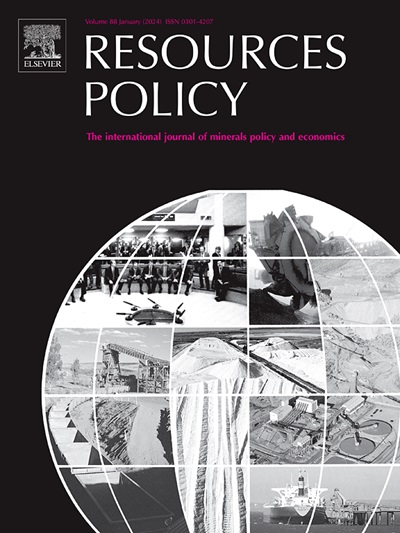如何通过国家锂战略使智利政府的收入最大化?
IF 10.2
2区 经济学
0 ENVIRONMENTAL STUDIES
引用次数: 0
摘要
智利政府国家锂战略的目标之一是增加税收,这可以通过征收从价税或通过政府对项目的所有权来实现。在设计税收制度时,一个关键的考虑因素是拉弗曲线,它表明,尽管更高的税收导致更多的收入,但税收负担可以减少所承担的项目数量。我们利用世界各地不同盐滩的数据,根据运营和资本支出的成本估算,计算出智利盐滩的理想收益。我们的分析表明,在不可能区分项目的情况下,从价税和政府参与率的最优值分别为10.94%和15.97%,每年为政府创造约36亿美元的收入。如果对每个项目采用单独的费率,无论机制类型如何,总金额都将增加到4.355亿美元。如果同时实现这两种机制,则收集量不会相对于已经获得的量而增加。这项研究表明,如果智利政府坚持要求在参与锂开采的合作伙伴中占有多数股权,那么在接下来的几年里,很可能很少有协议能够实现。一个成功的战略应该平衡收入优化与环境可持续性和社区参与,这些因素已经纳入智利的监管框架。因此,这种方法将有助于智利保持其在全球锂生产中的地位,尽管来自其他拥有大量储量的国家的竞争。本文章由计算机程序翻译,如有差异,请以英文原文为准。
How to maximize the chilean government's revenue with the National Lithium Strategy?
One of the goals of the Chilean Government's National Lithium Strategy is to increase tax revenue, which can be accomplished through levying an ad valorem tax or via government ownership of projects. A key consideration when designing the tax system is the Laffer curve, which demonstrates that although higher taxes lead to more revenue, the tax burden can reduce the number of projects undertaken.
We computed the ideal revenue for Chilean salt flats based on cost estimates for both operating and capital expenses, utilizing data from various salt flats worldwide. Our analysis indicates that if it is not possible to discriminate by project, the optimal ad valorem tax rate and government participation rate are 10.94 % and 15.97 %, respectively, generating about US$ 3600 million per year in revenue for the government. If a separate rate is applied for each project, the total amount increases to US$ 4355 million, irrespective of the mechanism type. If both mechanisms are implemented simultaneously, the collection does not increase in relation to the amount already obtained.
This research demonstrates that if the Chilean government persists in demanding a majority stake in the partnerships engaged in the exploitation of lithium, it is probable that few agreements will come to fruition in the following years. A successful strategy should balance revenue optimization with environmental sustainability and community engagement, factors already incorporated into Chile's regulatory framework. Consequently, this approach would help Chile maintain its position in global lithium production despite competition from other countries with significant reserves.
求助全文
通过发布文献求助,成功后即可免费获取论文全文。
去求助
来源期刊

Resources Policy
ENVIRONMENTAL STUDIES-
CiteScore
13.40
自引率
23.50%
发文量
602
审稿时长
69 days
期刊介绍:
Resources Policy is an international journal focused on the economics and policy aspects of mineral and fossil fuel extraction, production, and utilization. It targets individuals in academia, government, and industry. The journal seeks original research submissions analyzing public policy, economics, social science, geography, and finance in the fields of mining, non-fuel minerals, energy minerals, fossil fuels, and metals. Mineral economics topics covered include mineral market analysis, price analysis, project evaluation, mining and sustainable development, mineral resource rents, resource curse, mineral wealth and corruption, mineral taxation and regulation, strategic minerals and their supply, and the impact of mineral development on local communities and indigenous populations. The journal specifically excludes papers with agriculture, forestry, or fisheries as their primary focus.
 求助内容:
求助内容: 应助结果提醒方式:
应助结果提醒方式:


